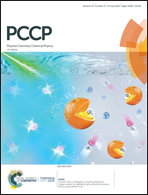Anisotropic thermoelectric properties of Weyl semimetal NbX (X = P and As): a potential thermoelectric material
Abstract
Weyl semimetal, a newly developed thermoelectric material, has aroused much interest due to its extraordinary transport properties. In this work, the thermoelectric transport properties of NbX (X = P and As), a prototypical Weyl semimetal, are investigated using the first-principles calculations together with Boltzmann transport theory. The calculated room-temperature lattice thermal conductivities along the a and c directions are 2.0 W mK−1 and 0.6 W mK−1 for NbP and 1.4 W mK−1 and 0.4 W mK−1 for NbAs, respectively. The low thermal conductivities may be useful in the thermoelectric applications. It is found that the acoustic branches have obvious contribution to the total lattice thermal conductivity, and the size dependence of the thermal conductivities can provide guidance for designing thermoelectric nanostructures. Our results show that the anisotropic structures of these compounds bring about the anisotropy of transport coefficients along the a and c directions, and the preferred direction is the c direction in thermoelectric applications. Moreover, NbP and NbAs show high ZT values of 0.82 and 0.50 along the c direction for p-type at an optimal carrier concentration, indicating that they are potential thermoelectric materials.



 Please wait while we load your content...
Please wait while we load your content...